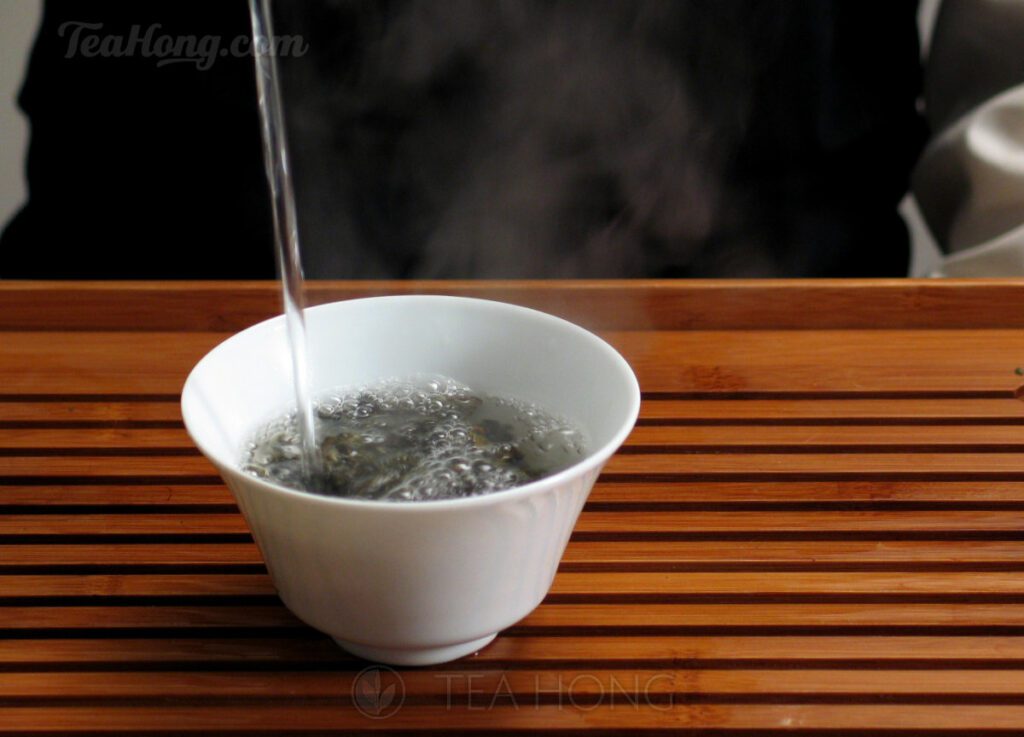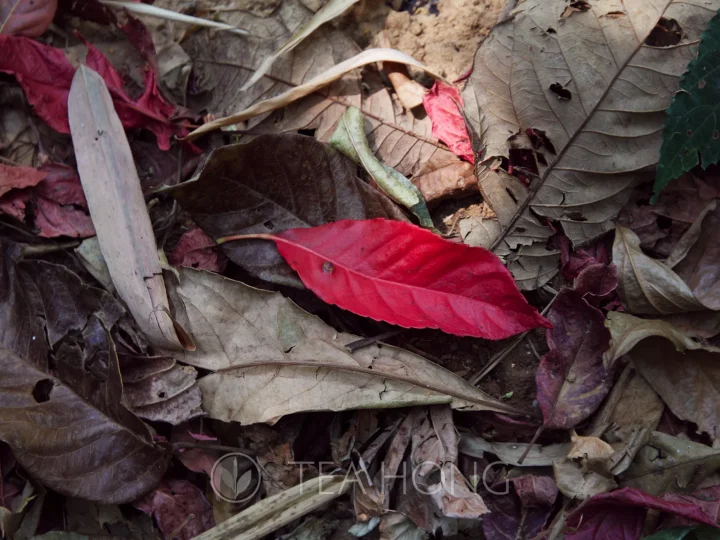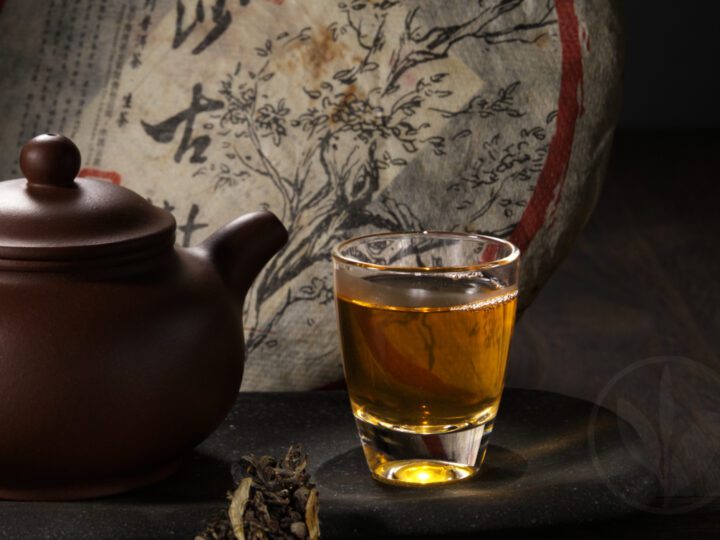Although it is perfectly okay to steep your maocha in a large pot in the conventional way, the tea can reveal a very different dimension when infused in a smaller vessel using shorter infusion durations, repeated for a few times. Done properly, both the olfactory and palatial experience can be more levitating than the cuppa from the big old pot.


The quality of water has a decisive effect on the final infusion result of a tea
Water
20 some years ago I brought my first tea brand to Paris. It was the first time I need to present tea outside of Asia. It was a horrifying experience. I had three teas laid out in front of a crowd of trade visitors. The tea were steeped as I usually would and decanted into separate chahais ( small tea decanters ) for serving in small paper cups for hygiene reasons. As I began to talk while serving up the tea, the liquor tuned from clear to murky with dark colour precipitations right in front of my eyes. Needless to say the taste was very different from my expectation.
The tap water in Paris, even after normal impurity filtration, was still too heavy with minerals for a proper cup of tea.
You need a TDS ( total dissolved solids ) of less than 120ppm for a reasonably satisfying cup. 60 to 80ppm would be ideal, but rather difficult for many locations.
Some people argue that you need a water that is more alkaline for tea, while others say a pH6 ( which is slightly acidic ). I’d say in the range of pH7 is good.
The most impact really comes from the minerals.
It is easy to get your water tested for TDS nowadays. If your tap water is less than ideal, I am sure there are locally available treatment systems, or there is always the easy way out by using bottled spring water. There still are people in Asia climbing up hills to gather water from upstream, or snow from the mountain top for tea.
You may not want to go to that extreme, but for a satisfying result from a tea as intricately balanced as a good maocha, you do need a decent water.
Back to my tragedy in France: I asked for help and was put in contact with a spring water brand to supply me throughout the trade show for free. Lucky me.
Infusion vessel


Naturally, the Yixing teapot would be an ideal tool. The wild characters of some of those maocha would be much tamed when infused in an appropriate clay. The next best thing would be a high density ceramic, such as a good porcelain or glazed stoneware. While the Yixing clay smoothens out edges, a ceramic can render an honest profile of a tea.
In this article, I shall share some tips for getting more enjoyment from a batch of maocha using a ceramic vessel, which is a lot more accessible for most people, and much easier to maintain and use. As for that of using a Yixing teapot, it will be in another piece of writing.
I am choosing a 150 ml vessel as a basis for my explanation. It will be a gaiwan for its large opening for manoeuvrability. A taster’s mug or a small porcelain teapot may work, but needs some other finesse in technique which will be covered in another article. Or any other new style infusion ware in that size and similar heat retainment properties as porcelain.
Try to avoid stainless steel, or any other metal, as it can impart a strange taste onto the infused liquor.
Leaf to water ratio
Particularly for sheng maocha, I’d use 7.5~8g of leaves for the gaiwan ( i.e. 5g to each 100g water ). If you find it too strong, reduce that ratio in your next trial.
Infusion temperature
As cold or room temperature infusion is getting more popular these days, I have to mention that maocha, or for that matter, most pu’er teas, be it shengcha or shu cha, are not suitable for the approach.
Although less than ideal, you may still getaway with using a 90°C water in certain well baked compressed pu’ers, that temperature will simply waste your maocha. The full taste profile simply cannot be rendered unless it is steeped with water at near boiling point.
Even distribution of heat to the volume of leaves
It is always ideal to pre-warm a vessel before leaves are put in it, but you may skip it by giving the leaves a thorough rinse with water at near 100°C in the vessel in the case of this subcategory of teas. You still need to blanch a maocha even if you have heated your gaiwan beforehand nevertheless.
Fill the gaiwan with leaves and pour water around the perimeter between the gaiwan and volume of leaves. Never into the centre of this “ball” of tealeaves. If you can manage it, pour from a distance from the gaiwan. Pour until it spills over. ( That is one reason why a proper infusion tray/table with drainage is useful )
( If you need a video reference, please refer to my previous upload: )
Using the lid, turn the ball of leaves once or twice before draining the blanching water.
Steeping duration and repeated infusion
The first infusion should be 20 second for rendering the best potential of your leaves. Go 30 s if you prefer your tea stronger.
Maocha tastes better while still quite hot and served in a smaller portion, say 20 ml.
Repeated infusions will bring forth a gradual transformation of the tasting experience. Subsequent infusion duration should be increased in the order of roughly 20, 35, 60, 90, 150, 200% and so on.
If you have been carried away in between and the leaves have got cold, do give them a quick blanch before infusing them again.
Gongfu tea or slow drink?
However you prefer to call this way of tea time, a break from the grind of life is worth a bit beyond the pure epicurean quality of a fine maocha.
Comments (0)
Leave a reply
You must be logged in to post a comment.







